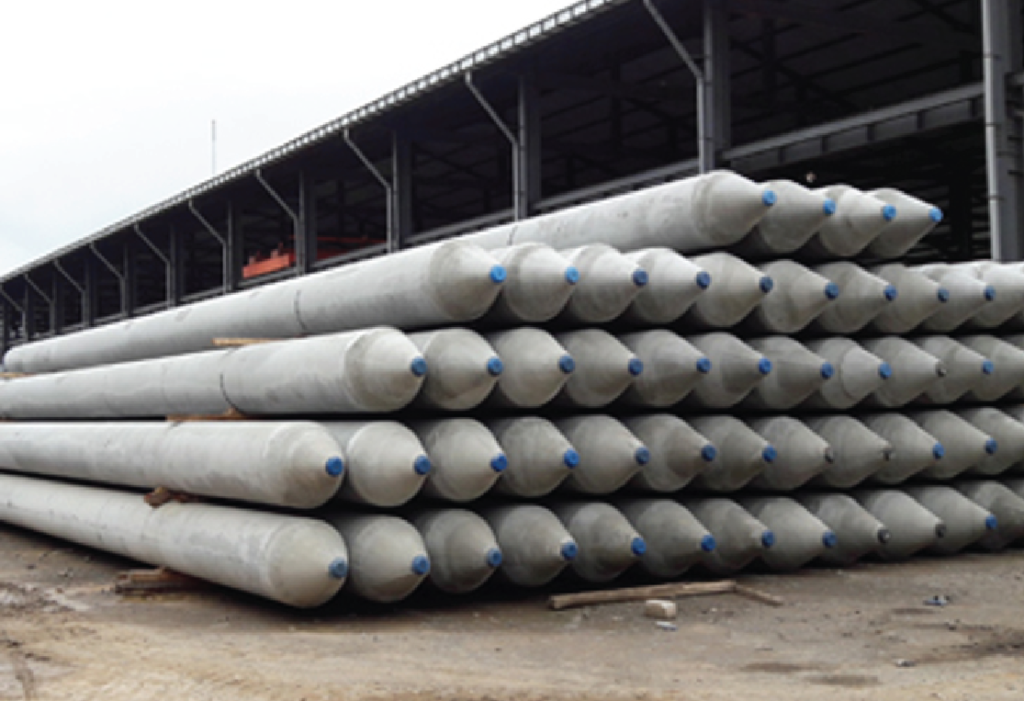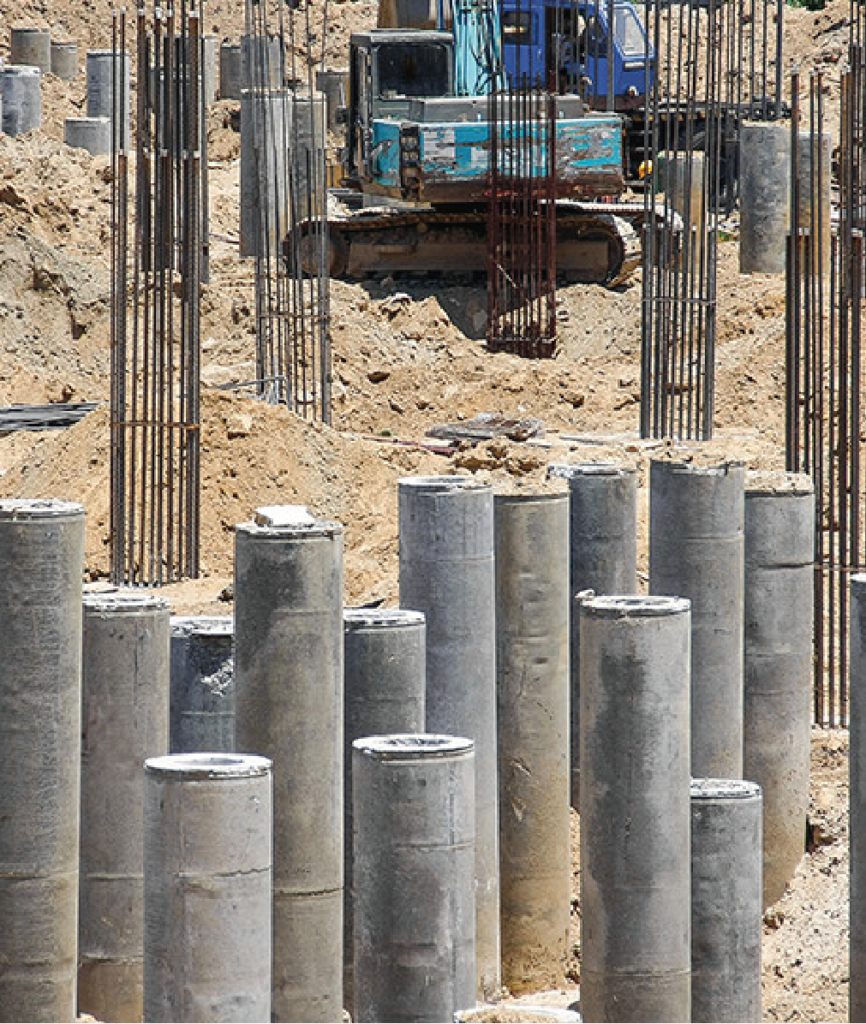Pile Foundations
Home > Spun Piles Malaysia
About Pile Foundations
A pile foundation refers to a set of columns inserted or constructed into the ground to transfer loads to a lower level of subsoil, providing support for structures built on them.
It is classified as a deep foundation. If the bearing capacity of the surface soil is insufficient to support the structure’s load, then a deep foundation can be applied, and the deeper soil will eventually hold the load.
It is extremely advantageous to install pile foundations for buildings in deep, shallow ground where settlement and uplift resistance are minimal. Piles need to pass through weak ground layers and then stand on a stable soil or rock layer to provide a strong foundation.

Functions of pile foundations
Also known as pad foundation or spread footing. In constructing a building, an isolated or individual footing is the most common type of foundation used, whereby it is built for a single column. It takes the shape of a circle, square or rectangle.
With uniform thickness, it is able to support and distribute concentrated loads. The calculation for its size is based on the ground conditions and load.
Spun Piles
Spun piles are concrete piles with circular hollow sections that have been prestressed. They are widely used in the construction industry, such as in bridges or buildings.
Produced with a spinning method, spun piles are made up of prestressed steel and high strength concrete.
Their outside diameter is typically about 300 to 1,200mm. Larger diameter ones from 915 to 1,676mm are referred to as cylinder pipes.
Besides that, spun piles perform well in marine environments as they are less permeable than reinforced concrete piles.


Benefits of spun piles in construction
- Large bearing, bending, and tensile capacity
- Durable against corrosion
- Uniform strength thus highly reliable
- Less costly compared to cast-in-situ piles and steel
- More economical for transportation and handling due to being lightweight (hollow section)
- Welding allows the segmented spun piles to be easily joined
- Do not crack and highly resistant to buckling
- Less permeability ensures the pile is more resistant to air and chloride, and thus not prone to rust
- Can be used in all conditions of ground/soils and equipments for pile driving
- Circular section eliminates torsion stresses and misalignments, unlike multi-sided piles
Installation of spun pile foundations
It is necessary to cast the piles at ground level and then use pile drivers or hammers to drive them into the soil. In this technique, heavy weights are lifted and dropped on top of the pile repeatedly. A pile should be driven into the ground until it reaches the refusal point, which is when it cannot be driven into the soil anymore.
Using proper pile installation methods plays a major role in the structural integrity of pile foundations. Because it does not disturb the supporting soil around the pile, it is an ideal method for driving piles because each pile has the highest bearing capacity.
Since every pile influences the soil around it, piles must be placed far enough apart from one another in order to distribute loads evenly.
It is recommended that pile foundations be used if there are canals or drainage systems nearby or when the structure itself bears nonuniform and heavy loads.
